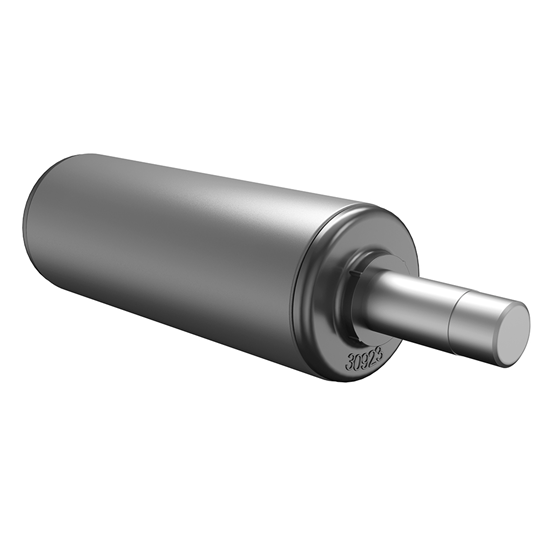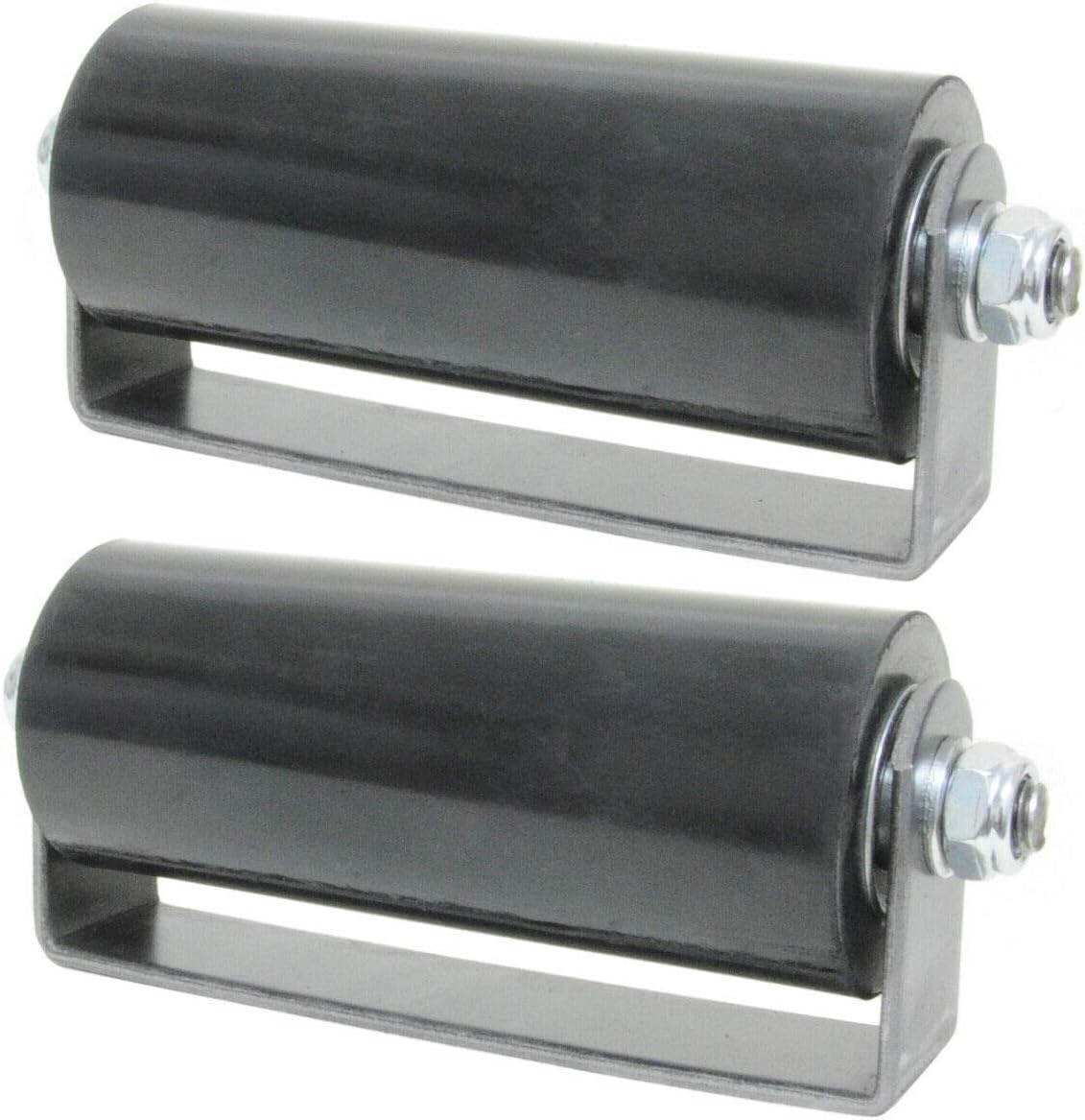Product Description
Conveyor roller is an important component, types and large quantities. It accounts for the total cost of a conveyor 35%,to
withstand more than 70% of the resistance, so the quality of roller is particularly important.
Our roller has Minimal rtating inertia,reliable tightness,flexible rotating, simple dismounting, easy maintained, long
operational life, etc.Also we can do as customer request.
OEM Top quality hdpe rollers belt conveyor dia 70×1500 mm
/* January 22, 2571 19:08:37 */!function(){function s(e,r){var a,o={};try{e&&e.split(“,”).forEach(function(e,t){e&&(a=e.match(/(.*?):(.*)$/))&&1
| Material: | Steel |
|---|---|
| Application: | Mining Transport |
| Structure: | Ordinary Roller |
| Bearing Type: | Single Sealed Bearing |
| Type: | Parallel Conveyor Idler |
| Product Name: | Hot Sale Conveyor Roller Steel Conveyor Roller |
| Samples: |
US$ 0.01/Piece
1 Piece(Min.Order) | |
|---|
| Customization: |
Available
|
|
|---|

Can you provide examples of products or machinery that commonly use guide rollers?
Guide rollers are used in various industries and applications where precise and controlled motion of materials or objects is required. Here are some examples of products or machinery that commonly use guide rollers:
- Conveyor Systems:
Guide rollers are extensively used in conveyor systems across industries such as manufacturing, logistics, and warehousing. They are essential components in belt conveyors, roller conveyors, and gravity conveyors. Guide rollers ensure smooth and accurate movement of materials or objects along the conveyor, preventing misalignment, deviations, and material spillage. Conveyor systems in industries like automotive, food and beverage, e-commerce, and package handling rely on guide rollers for efficient material handling and transport.
- Printing and Packaging Machinery:
In printing and packaging machinery, guide rollers play a critical role in maintaining precise alignment and tension control of materials, such as paper, film, or labels. They are used in machinery for processes like printing, laminating, slitting, cutting, and folding. Guide rollers guide the materials through various stages, ensuring accurate positioning and preventing wrinkles, creases, or misalignment. Printing presses, label applicators, paper converting machines, and packaging lines commonly incorporate guide rollers to achieve high-quality output and efficient production.
- Textile Machinery:
Textile machinery, including weaving machines, knitting machines, and spinning machines, utilize guide rollers in their operations. Guide rollers guide the fabric or yarn through different stages of the manufacturing process, ensuring proper alignment, tension, and controlled movement. They help prevent yarn tangling, fabric distortions, or misalignment during weaving, knitting, or spinning. Guide rollers are crucial components in textile machinery, enabling efficient and precise fabric production.
- Paper and Printing Industry:
In the paper and printing industry, guide rollers are utilized in various equipment and processes. For example, in offset printing presses, guide rollers assist in accurate paper feeding and alignment, ensuring precise registration of colors and images. In paper converting machines, guide rollers help guide the paper through cutting, folding, or gluing operations. Guide rollers also find application in bookbinding machines, where they facilitate the movement of paper signatures or book blocks through the binding process.
- Metal and Woodworking Machinery:
Guide rollers are commonly used in metal and woodworking machinery to guide and support workpieces during cutting, shaping, or milling operations. In sawing machines, guide rollers ensure proper alignment and smooth movement of the material being cut. They also help prevent blade deflection or workpiece deviation. In woodworking routers or planers, guide rollers assist in controlling the movement of the workpiece, allowing for precise shaping or milling. Guide rollers contribute to increased accuracy and efficiency in metal and woodworking processes.
- Automated Guided Vehicles (AGVs):
Automated Guided Vehicles (AGVs) used in material handling and logistics applications often incorporate guide rollers. Guide rollers are installed on AGVs to follow guide tracks or lines embedded in the floor or along the designated paths. They ensure accurate navigation and controlled motion of AGVs within warehouses, distribution centers, or manufacturing facilities. Guide rollers help AGVs maintain their intended paths, avoid obstacles, and achieve efficient and safe material transport.
These are just a few examples illustrating the wide range of products and machinery that commonly use guide rollers. Their versatility and ability to provide precise and controlled motion make guide rollers integral components in numerous industries, contributing to improved efficiency, productivity, and quality in various material handling and manufacturing processes.

How do guide rollers contribute to the adaptability and versatility of conveyor systems in various settings?
Guide rollers play a critical role in enhancing the adaptability and versatility of conveyor systems in various settings. Here’s a detailed explanation of their contributions:
- Flexible Path Routing:
Guide rollers enable flexible path routing, allowing conveyor systems to navigate complex layouts and adapt to different settings. By guiding the materials along specific paths, guide rollers facilitate precise material movement around obstacles, corners, inclines, or declines. This flexibility in path routing enables conveyor systems to be customized and configured to suit the specific requirements of different environments, layouts, or production processes. It allows for efficient space utilization and the integration of conveyors into existing infrastructure, making conveyor systems adaptable to a wide range of settings.
- Multiple Conveyor Configurations:
Guide rollers enable the creation of multiple conveyor configurations, enhancing the versatility of conveyor systems. By combining straight sections, curves, merges, and diverges, conveyor systems can be configured to accommodate various material flow patterns and operational needs. Guide rollers provide the necessary support and alignment to ensure smooth transitions between different conveyor sections, allowing materials to be efficiently transferred, merged, sorted, or diverted. This versatility enables conveyor systems to be adapted for different processes, such as assembly lines, distribution centers, warehouses, or manufacturing facilities.
- Adjustable Speed and Control:
Guide rollers contribute to the adaptability of conveyor systems by enabling adjustable speed and control. By adjusting the rotational speed of the guide rollers, the speed of material movement can be customized to match the specific requirements of different processes or settings. This flexibility in speed control allows conveyor systems to handle a wide range of materials, from delicate or fragile items that require gentle handling to heavy or bulky items that require faster conveyance. Adjustability in speed and control enhances the versatility of conveyor systems and ensures optimal material handling in various settings.
- Modularity and Scalability:
Guide rollers facilitate the modularity and scalability of conveyor systems, making them adaptable to changing production needs or facility layouts. Conveyor systems can be designed with modular components, including guide rollers, that can be easily reconfigured, added, or removed as required. This modularity allows for efficient system expansion, modification, or reconfiguration without significant downtime or disruption. Guide rollers can be adjusted, replaced, or repositioned to accommodate changes in material types, sizes, or handling requirements. The scalability and modularity provided by guide rollers make conveyor systems versatile and adaptable to evolving operational needs.
- Material Compatibility:
Guide rollers contribute to the adaptability of conveyor systems by accommodating a wide range of materials. They can be designed with different materials, surface textures, or coatings to suit specific material characteristics, such as size, shape, weight, or fragility. Guide rollers with specialized surfaces, such as non-slip coatings or friction-reducing materials, can be used for conveying items that require additional grip or gentle handling. This material compatibility enhances the versatility of conveyor systems, allowing them to handle diverse products or materials in various settings, from lightweight packages to heavy-duty items.
In summary, guide rollers significantly contribute to the adaptability and versatility of conveyor systems in various settings. They enable flexible path routing, support multiple conveyor configurations, allow for adjustable speed and control, facilitate modularity and scalability, and accommodate a wide range of materials. By leveraging the capabilities of guide rollers, conveyor systems can be tailored to meet the specific needs of different industries, processes, or layouts, making them adaptable and versatile in diverse settings.

How does the design of a guide roller contribute to efficient material handling and movement?
The design of a guide roller plays a crucial role in facilitating efficient material handling and movement within industrial applications. Here’s a detailed explanation of how the design of a guide roller contributes to efficiency:
- Surface Configuration:
The surface configuration of a guide roller is carefully designed to optimize material handling and movement. Depending on the specific application, guide rollers may have a smooth surface, grooves, or flanges. A smooth surface reduces friction and allows objects to glide smoothly along the roller. Grooves or flanges provide additional guidance and prevent objects from deviating or slipping off the roller. The surface configuration ensures proper alignment and prevents misalignment, leading to efficient material handling and movement.
- Material Selection:
The choice of materials for guide rollers is critical in ensuring efficient material handling. Guide rollers are commonly made from durable materials such as metal or high-quality plastics. These materials offer excellent strength, wear resistance, and dimensional stability. The selected materials should also have low friction properties to minimize energy loss and reduce the potential for material damage or wear. By selecting appropriate materials, the design of guide rollers contributes to efficient and reliable material handling and movement.
- Bearing System:
The design of guide rollers incorporates a bearing system that allows smooth rotation and minimizes friction. The bearings used in guide rollers are typically sealed or shielded to protect against contaminants and ensure long-lasting performance. The bearing system enables the guide roller to rotate freely, reducing resistance and facilitating efficient material movement. It also contributes to the longevity of the guide roller by reducing wear and minimizing the need for frequent maintenance.
- Size and Diameter:
The size and diameter of a guide roller are carefully determined based on the specific application and load requirements. Guide rollers come in various sizes and diameters to accommodate different material handling needs. Larger guide rollers can handle heavier loads with greater stability, while smaller guide rollers are suitable for lighter objects or confined spaces. The appropriate sizing and diameter of the guide roller ensure optimal support, load distribution, and efficient movement of materials.
- Installation and Positioning:
The design of guide rollers takes into account proper installation and positioning within the machinery or system. Guide rollers are strategically placed along the intended path to provide continuous guidance and support. The spacing between guide rollers is determined to prevent material deviation or excessive sagging. Proper installation and positioning of guide rollers ensure smooth and consistent material handling, minimizing the risk of jams, misalignment, or disruptions in the movement process.
In summary, the design of a guide roller significantly contributes to efficient material handling and movement. The surface configuration, material selection, bearing system, size and diameter, as well as the proper installation and positioning of guide rollers, all play a vital role. By providing precise guidance, minimizing friction, supporting loads, and ensuring proper alignment, the design of guide rollers optimizes material handling processes, enhances productivity, and promotes efficient movement within industrial applications.


editor by Dream 2024-04-22